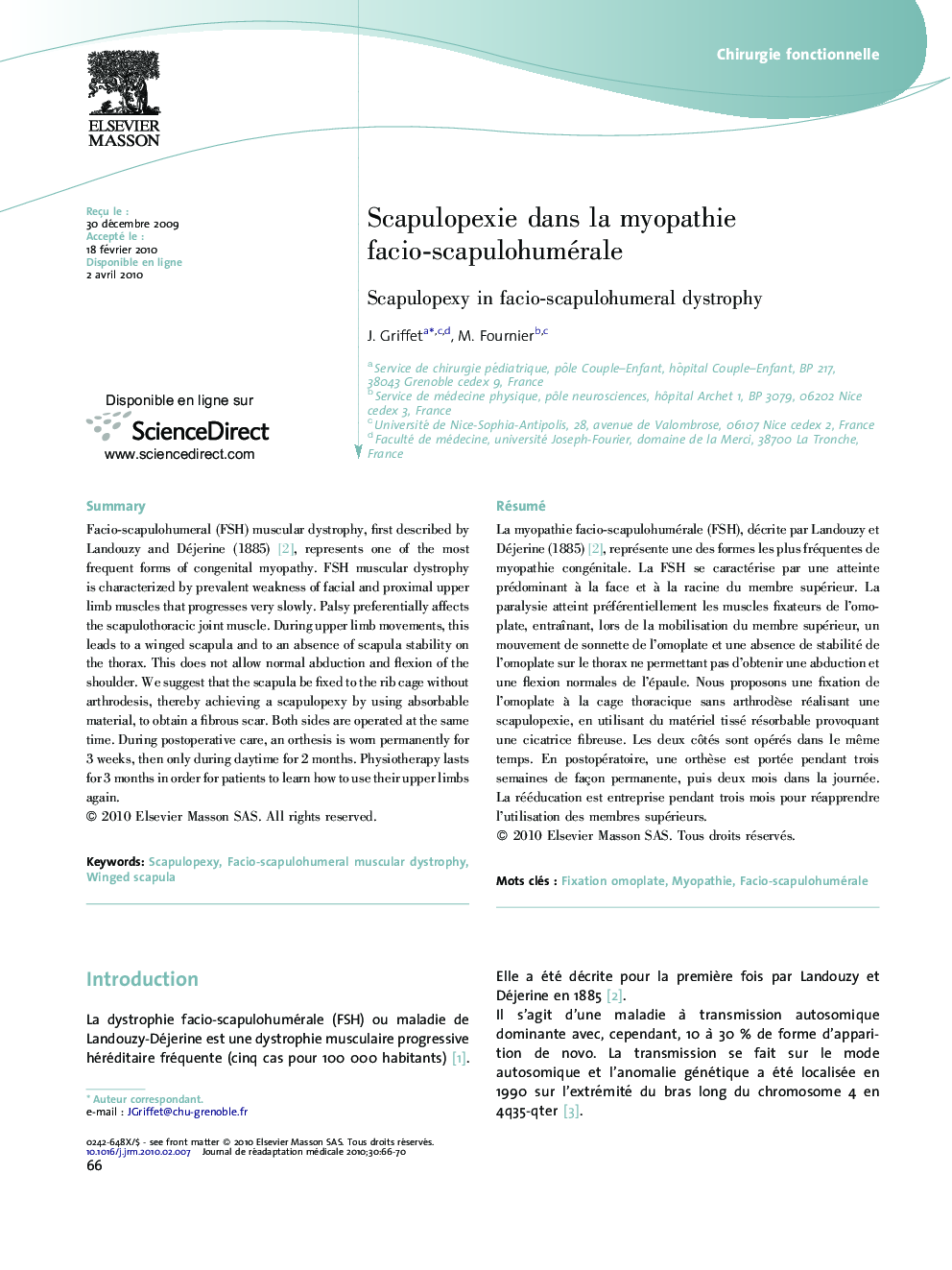| Article ID | Journal | Published Year | Pages | File Type |
|---|---|---|---|---|
| 2701094 | Journal de Réadaptation Médicale : Pratique et Formation en Médecine Physique et de Réadaptation | 2010 | 5 Pages |
Abstract
Facio-scapulohumeral (FSH) muscular dystrophy, first described by Landouzy and Déjerine (1885) [2], represents one of the most frequent forms of congenital myopathy. FSH muscular dystrophy is characterized by prevalent weakness of facial and proximal upper limb muscles that progresses very slowly. Palsy preferentially affects the scapulothoracic joint muscle. During upper limb movements, this leads to a winged scapula and to an absence of scapula stability on the thorax. This does not allow normal abduction and flexion of the shoulder. We suggest that the scapula be fixed to the rib cage without arthrodesis, thereby achieving a scapulopexy by using absorbable material, to obtain a fibrous scar. Both sides are operated at the same time. During postoperative care, an orthesis is worn permanently for 3Â weeks, then only during daytime for 2Â months. Physiotherapy lasts for 3Â months in order for patients to learn how to use their upper limbs again.
Keywords
Related Topics
Health Sciences
Medicine and Dentistry
Orthopedics, Sports Medicine and Rehabilitation
Authors
J. Griffet, M. Fournier,
